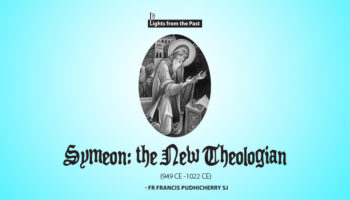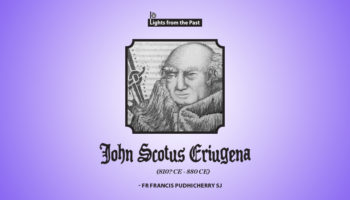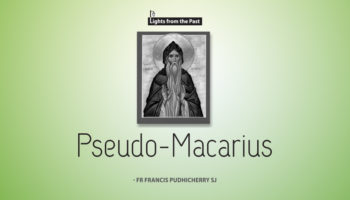Christ set forth in Himself patterns of both lives, that is, the active and the contemplative, united together. Our Redeemer, by coming Incarnate, united both in Himself. For when He wrought miracles in the city, and yet continued all night in prayer on the mountain, He gave His faithful ones an example not to neglect, through love of contemplation, the care of their neighbours, nor again to abandon contemplative pursuits, from being too immoderately engaged in the care of their neighbours.
(Morals on the Book of Job, Bk. 28,13)
Pope Gregory was born in 540 CE. At the young age of thirty, became the prefect of Rome and presided over the senate. Despite his extraordinary political success, he believed he had a vocation to become a monk. In 574, soon after the death of his father, he sold his family property and transformed his Roman estate into a monastery. Later Pope Pelagius II ordained him a deacon and appointed him the papal representative in Constantinople. In 585 he returned to Rome, became an abbot at St. Andrew’s and was made the pope’s personal counsellor. Despite his attempts to avoid election, he was made Pope in 590. His papacy was dynamic and influential, coinciding with the invasion of the Lombards, tensions with Imperial powers, corruption within the church and other disasters, such as floods, famines, and diseases. He responded to these challenges and proved to be an able administrator, a deft diplomat, a deeply spiritual person and, above all, an exemplary Pastor. Despite his political, religious and ecclesiastical responsibilities, he paid attention to the poor of Rome and fed them daily. Along with Ambrose, Jerome and Augustine, he is considered to be one of the four doctors of the Latin Church.
Gregory was a prolific writer. His various writings on Scripture include his homilies on the Gospels and Ezekiel, as well as thirty-five volumes on the book of Job. He was an accomplished spiritual writer who affirmed that all of us are created in order to ‘contemplate God’s beauty and dwell in His love.’ He outlined the spiritual journey as consisting in three stages: a) recollection, where a person becomes aware of oneself as a fragmented being; b) introversion, by which there is self-contemplation and an awareness of one’s true nature; and finally c) contemplation, where a person transcends oneself and contemplates the Maker. Only a meditative study of scriptures makes contemplation possible. His Book of Pastoral Rule written to his fellow Bishop John presents the vocation to be a bishop as that of a true shepherd combining both contemplative love of God and active charity. It is divided into four parts: a) the qualities necessary for spiritual leadership, b) the life of a Pastor, c) manner of teaching, advising and guiding the laity and d) the need to return to oneself after doing one’s duty.
The importance of both contemplative and active life was stressed in Morals in the Book of Job. Gregory believed that a life of contemplation was favored and necessary for an authentic active life. However, both forms of life had their place within the call to follow Christ, because Christ Himself lived a life of contemplation and action. Affirming the role of both Martha and Mary, he said, “Martha’s concern is not reproved, but that of Mary is commended” (Morals… Bk.6,61). Today we find, within the Church, a variety of vocations with a variety of charisms that include both the active and contemplative vocations. The spiritual wisdom of Pope Gregory the Great helps us fruitfully live our unique call by guiding us towards an integration of both profound contemplation and loving action.
To subscribe to the magazine Contact Us





